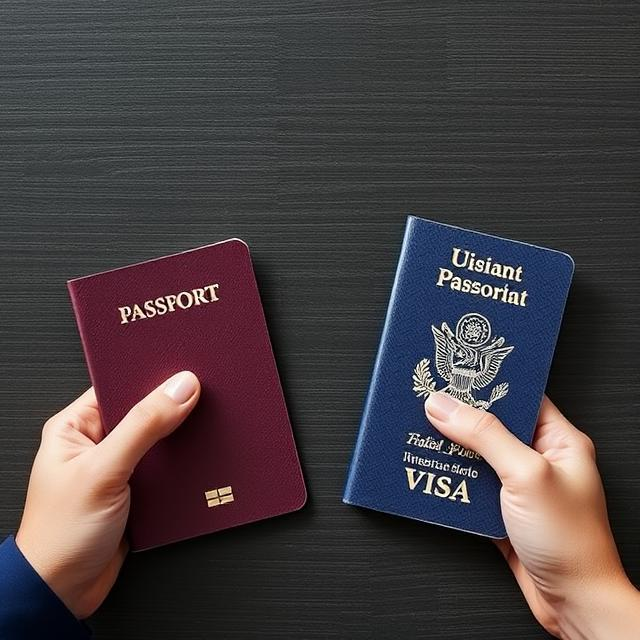Negotiating visa sponsorship with employers can be a delicate and strategic process. It’s essential to approach the conversation professionally, ensuring that you express both your interest in the job and your understanding of the potential challenges that may come with sponsoring a visa. Below are some steps to guide you through negotiating visa sponsorship:
1. Understand the Employer’s Perspective
Before you approach an employer about visa sponsorship, it’s important to understand their point of view. Sponsoring a visa can be a complex, time-consuming, and sometimes costly process. Employers might hesitate to sponsor visas unless they are confident that the candidate brings exceptional skills and value to the company.
- Costs and Time: Employers may be required to pay fees for visa applications, legal services, and administrative processes. The process may also take several weeks to months.
- Job Market: Employers may want to hire local talent to avoid the extra paperwork, but highly skilled international candidates can often bring unique value.
- Risk Management: The employer may have concerns about the uncertainty of the sponsorship process, including potential visa denials or delays.
Understanding these concerns will help you approach the negotiation with sensitivity and preparation.
2. Assess Whether the Job Requires Sponsorship
Some jobs, especially in specialized fields like technology, engineering, healthcare, or academia, may automatically involve visa sponsorship, while others may not. Before negotiating, ask yourself:
- Is the job in an industry that typically sponsors visas?
- Do you have the required skills or qualifications to make sponsorship worthwhile to the employer?
- Is the employer already familiar with the visa sponsorship process, or would you be introducing them to it?
If the job doesn’t typically require sponsorship, you may need to work harder to convince the employer why they should sponsor your visa. However, if it’s a high-demand skill, your chances of success increase.
3. Bring It Up Early, but After Demonstrating Your Value
It’s crucial to bring up visa sponsorship during the negotiation process, but ideally after you’ve demonstrated that you’re a strong candidate for the role. Employers are more likely to sponsor your visa if they already see the value you can add to their company.
Steps to approach the topic:
- Highlight Your Skills and Value: In the interview process, emphasize the skills, experiences, and qualifications that make you a strong fit for the role. Be sure to focus on how your background and expertise will contribute to the company’s success.
- Be Ready to Discuss: If visa sponsorship is a significant part of your job search, you can discuss it after you’ve established that you’re the right candidate for the job. Avoid bringing it up too early in the process, as it might come across as the main priority.
4. Be Transparent and Clear
Once you’ve proven that you’re the right candidate for the job, be upfront about needing visa sponsorship. It’s better to have an open and transparent conversation with your prospective employer than to leave it unclear until later in the process.
- Clarify Your Status: Let the employer know which visa type you would need (e.g., H-1B, TN, O-1, L-1, or a Temporary Work Permit in Canada). Mention if you need an LMIA (in Canada) or if you’re already eligible for other visa options.
- Explain the Process: If the employer isn’t familiar with the process, be prepared to explain how visa sponsorship works. You don’t need to know everything, but having a general understanding of the process (e.g., timeline, costs, and required documentation) will show you’re knowledgeable and professional.
5. Show Flexibility and Willingness to Help
Visa sponsorship can be a time-consuming and expensive process for employers, so you should show flexibility and offer to take on some of the administrative burden if possible.
- Research Visa Processes: Be prepared to assist the employer with some of the logistics of the sponsorship process. You could offer to help with paperwork, provide all the necessary documents upfront, or even research visa sponsorship rules in their country.
- Be Flexible with Timing: Let the employer know that you’re flexible with the timeline and can work with them to plan the sponsorship process around their internal timelines.
- Offer to Cover Certain Costs: Depending on the situation, you could offer to cover some costs (e.g., legal fees) to make the process easier for them. While this is not expected, showing this level of commitment can demonstrate your willingness to make the transition smoother.
6. Address Any Potential Concerns
Employers may have concerns about visa sponsorship, such as the costs involved, the time commitment, or the uncertainty of the approval process. Be ready to address these concerns confidently.
- Highlight the Benefits: Explain how sponsoring a visa allows the company to access a global talent pool and bring in unique skills. Show them that you’re not just filling a position, but adding value that might not be available from the local job market.
- Offer Solutions for Long-Term Stability: Reassure the employer that you are committed to staying with the company for the long term, which can help ease concerns about short-term investment in sponsoring you.
7. Understand the Cost and Timeline of Sponsorship
Employers may worry about the costs and time involved in visa sponsorship. It’s essential to have an understanding of these factors so you can explain them accurately to your potential employer.
- Costs: Let the employer know that the costs involved with visa sponsorship can vary but typically include legal fees, filing fees, and administrative costs. The amount could range from hundreds to thousands of dollars, depending on the visa type.
- Processing Time: Work visa processing times can vary depending on the visa type, country, and location. For example, H-1B visa processing in the U.S. can take several months, so it’s important to make sure the timeline is clear.
8. Be Prepared to Negotiate Other Aspects of the Offer
If the employer is hesitant to offer visa sponsorship or is only willing to do so under specific conditions, try to negotiate other aspects of the offer.
- Salary and Benefits: If the employer is hesitant about sponsorship, you might negotiate a higher salary to cover the costs they will incur during the visa process. You can also negotiate other benefits, such as relocation assistance or extended benefits, which can make the offer more attractive.
- Contract Terms: If the employer is concerned about a long-term commitment to the sponsorship process, suggest a contractual agreement where you agree to stay with the company for a certain number of years to ensure they recoup their investment.
9. Consider Alternatives if Sponsorship is Not Possible
If visa sponsorship is not possible with the employer, consider these alternatives:
- Inquire About Future Opportunities: If the company is not able to sponsor your visa now, ask if they would be open to sponsoring your visa at a later stage, after you’ve proven your value within the organization.
- Look for Companies Already Familiar with Sponsorship: Some companies specialize in hiring international talent and may already have streamlined visa sponsorship processes in place.
10. Be Prepared for Any Outcome
Lastly, be prepared for both outcomes. Not every employer will be willing or able to sponsor a visa. If the employer declines to offer sponsorship, assess whether the opportunity is still a good fit for you or whether it’s time to explore other options.






